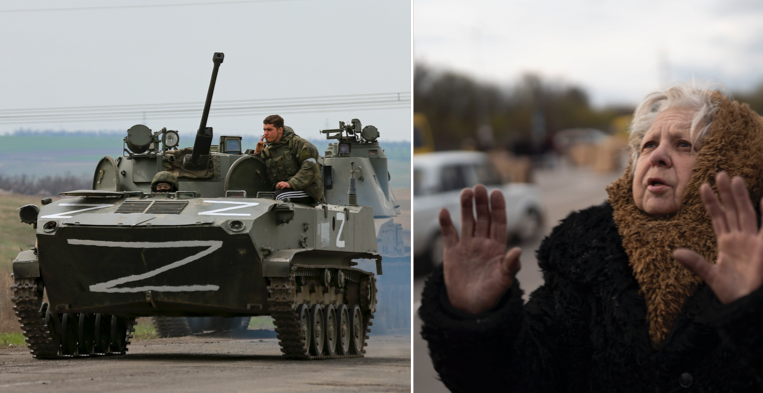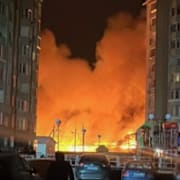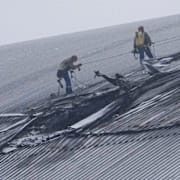
Ryssland: Ska ta kontroll över Donbas och södra Ukraina
Ryssland planerar att ta full kontroll över Donbas och södra Ukraina som en del i den andra fasen av landets invasion av Ukraina. Det säger Rustam Minnekaev, biträdande befälhavare för Rysslands centrala militärdistrikt, till ryska nyhetsbyrån Interfax enligt Reuters och AFP.
Minnekaev säger även att Ryssland planerar att upprätta en landbrygga mellan Donbas och den sedan tidigare annekterade Krymhalvön.
Uttalandet är den hittills mest detaljerade beskrivningen från ryskt håll av landets mål med den andra fasen av invasionen, skriver AFP.
bakgrund
Donbas
Wikipedia (en)
The Donbas or Donbass (UK: , US: ; Ukrainian: Донба́с [donˈbɑs]; Russian: Донба́сс [dɑnˈbɑs]) is a historical, cultural, and economic region in southeastern Ukraine. Parts of the Donbas are controlled by separatist groups as a result of the Russo-Ukrainian War: the Donetsk People's Republic and the Luhansk People's Republic. The word Donbas is a portmanteau formed from "Donets Basin", an abbreviation of "Donets Coal Basin" (Ukrainian: Донецький вугільний басейн, romanized: Donetskyi vuhilnyi basein; Russian: Донецкий угольный бассейн, romanized: Donetskii ugolnyi bassein). The name of the coal basin is a reference to the Donets Ridge; the latter is associated with the River Donets.
Numerous definitions of the region's extent exist. The most common definition in use today refers to the Donetsk and Luhansk regions of Ukraine, whilst the historical coal mining region excluded parts of these oblasts, and included areas in Dnipropetrovsk Oblast and Southern Russia. A Euroregion of the same name is composed of Donetsk and Luhansk oblasts in Ukraine and Rostov Oblast in Russia. The Donbas formed the historical border between the Zaporizhian Sich and the Don Cossack Host. It has been an important coal mining area since the late 19th century, when it became a heavily industrialised territory.In March 2014, following the Euromaidan protest movement and the resulting Revolution of Dignity, large swaths of the Donbas became gripped by pro-Russian and anti-government unrest. This unrest later grew into a war between Ukrainian government forces and Russian and pro-Russian separatists affiliated with the self-proclaimed Donetsk and Luhansk "People's Republics", who were supported by Russia as part of the broader Russo-Ukrainian War, which is still ongoing as of 2022. Both republics went internationally unrecognised until their recognition by Russia in 2022. The conflict rendered the Donbas split between Ukrainian-held territory, constituting about two-thirds of the region, and Russian-held territory, constituting about one-third. Russia went on to launch a full-scale invasion of Ukraine, including the Ukrainian-government controlled part of the Donbas in February 2022.
Before the war, the city of Donetsk (then the fifth largest city in Ukraine) had been considered the unofficial capital of the Donbas. Large cities (over 100,000 inhabitants) included Luhansk, Mariupol, Makiivka, Horlivka, Kramatorsk, Sloviansk, Alchevsk, Sievierodonetsk and Lysychansk. Now the city of Kramatorsk is the interim administrative centre of the Donetsk Oblast, while the interim centre of Luhansk Oblast is Sievierodonetsk.
Omni är politiskt obundna och oberoende. Vi strävar efter att ge fler perspektiv på nyheterna. Har du frågor eller synpunkter kring vår rapportering? Kontakta redaktionen



